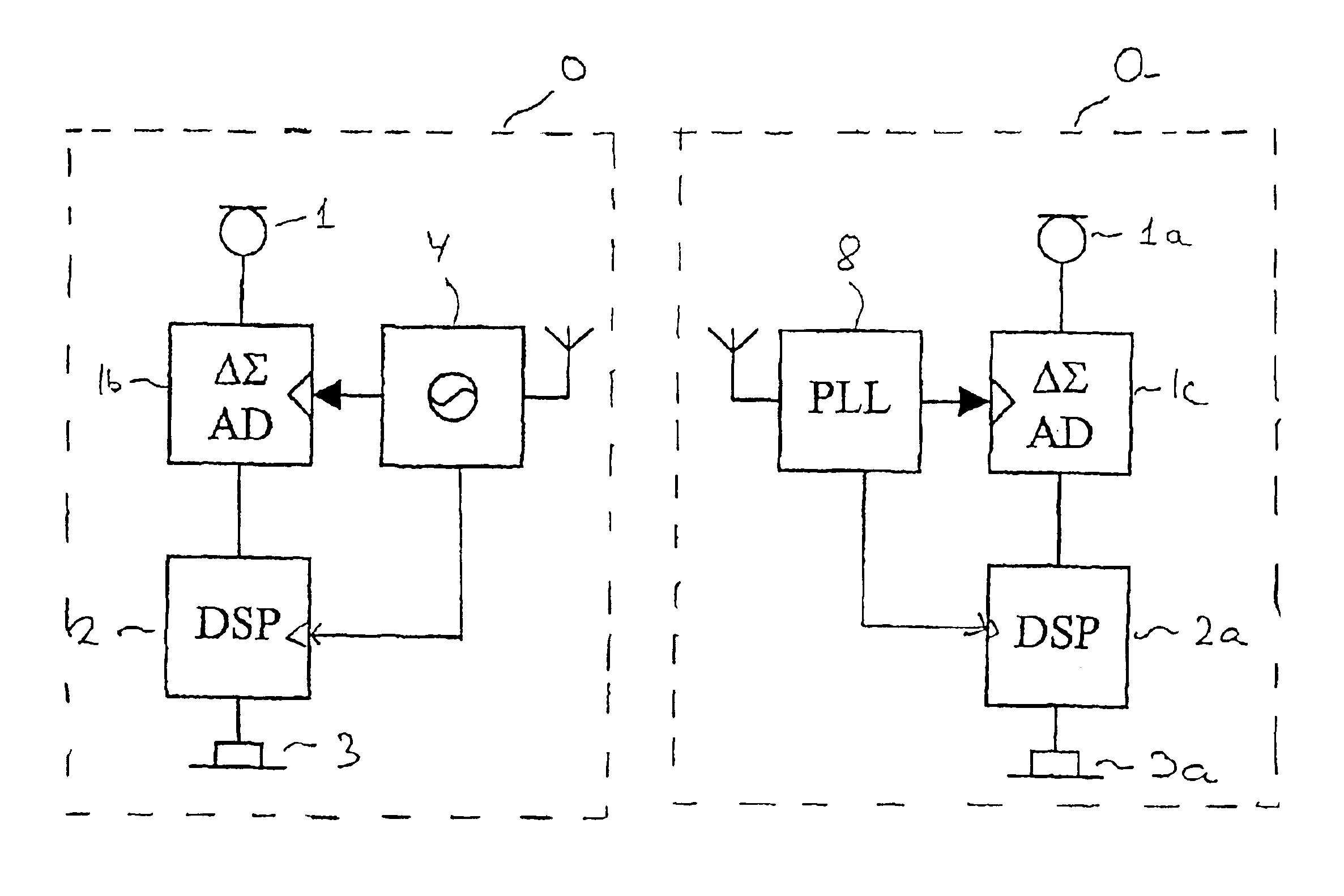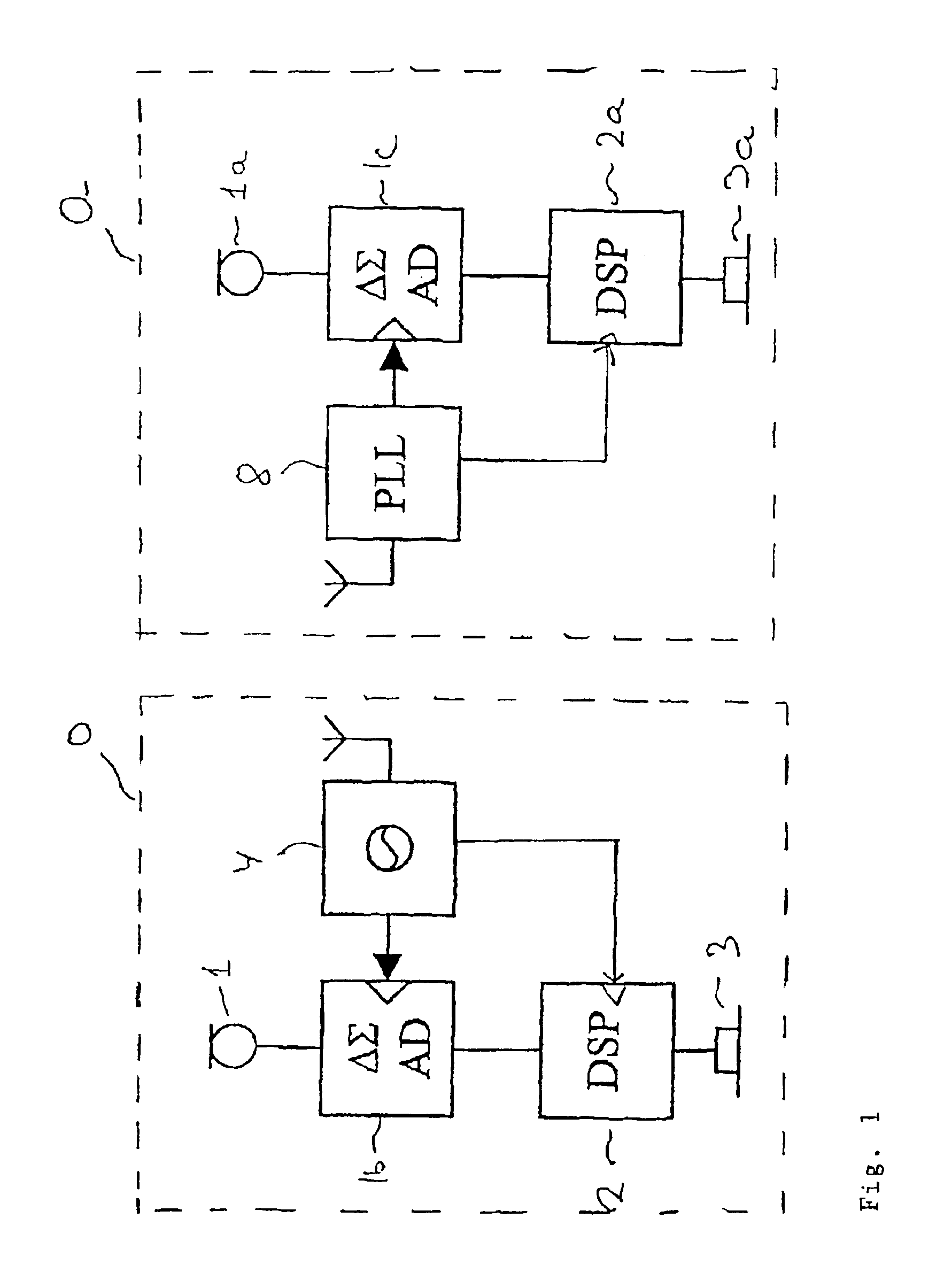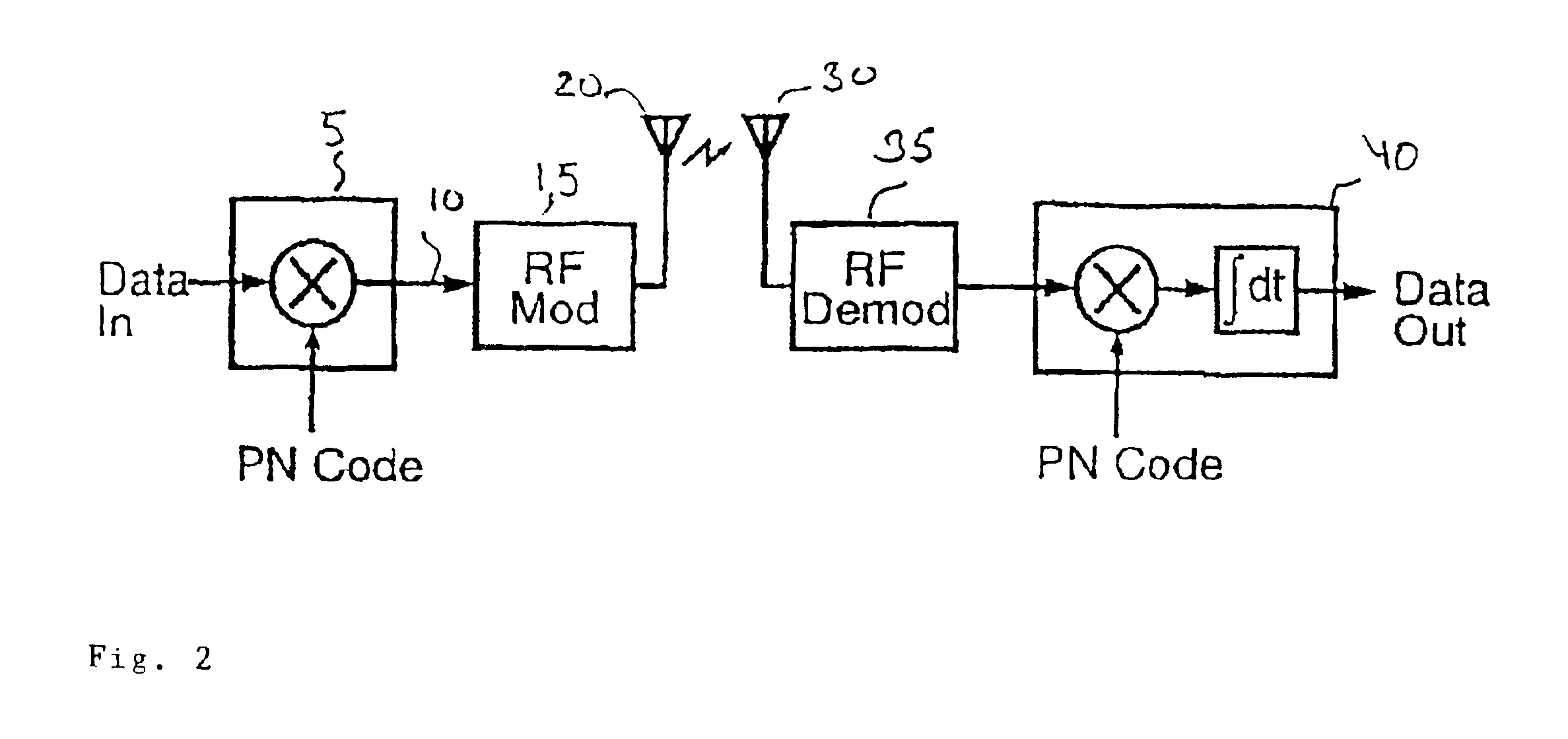Synchronized binaural hearing system
a binaural hearing and synchronization technology, applied in the field of binaural hearing systems, can solve the problems of unrecognized wireless synchronisation technology that would actually be capable of providing the required synchronisation between the unit or the aid, acoustic beam that appears to drift and focus in alternating directions, and undesirable effects, which will be very annoying for the hearing aid user
- Summary
- Abstract
- Description
- Claims
- Application Information
AI Technical Summary
Benefits of technology
Problems solved by technology
Method used
Image
Examples
Embodiment Construction
A first aspect of the invention relates to a binaural hearing system comprising a first and a second hearing prosthesis adapted for wireless bi-directional communication of digital data signals; the first hearing prosthesis comprises a first microphone adapted to generate a first input signal in response to receiving acoustic signals,a first analogue-to-digital converter adapted to sample the first input signal by a first sampling clock signal to generate a first digital input signal,a first clock generator adapted to generate a coding clock signal, a data rate clock signal and the first sampling clock signal synchronously with respect to each other,a first sequence generator adapted to generate a repetitive coding sequence synchronously to the coding clock signal,first data generating means adapted to provide a first data signal synchronously to the data rate clock signal,a first wireless transceiver adapted to receive and modulate the first data signal with the repetitive coding s...
PUM
 Login to View More
Login to View More Abstract
Description
Claims
Application Information
 Login to View More
Login to View More - R&D
- Intellectual Property
- Life Sciences
- Materials
- Tech Scout
- Unparalleled Data Quality
- Higher Quality Content
- 60% Fewer Hallucinations
Browse by: Latest US Patents, China's latest patents, Technical Efficacy Thesaurus, Application Domain, Technology Topic, Popular Technical Reports.
© 2025 PatSnap. All rights reserved.Legal|Privacy policy|Modern Slavery Act Transparency Statement|Sitemap|About US| Contact US: help@patsnap.com



